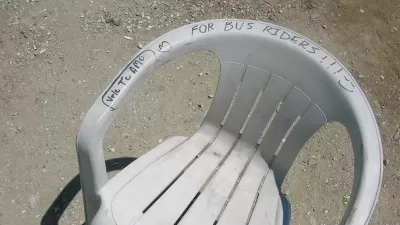The Federal Transit Administration announced the winners in the Bus and Bus Facilities and Low or No Emission Vehicle (Low-No Program) programs in August.
Recent weeks have been packed with federal grant announcements, from RAISE competitive grants to Build Back Better Regional Challenge competitive grants, if you blinked you might have missed the Federal Transit Administration’s announcement of $1.66 billion funding for the Bus and Bus Facilities and Low or No Emission Vehicle (Low-No Program) programs. The latter provides funding to help transit agencies buy or lease U.S.-built low- or no-emission vehicles, including related equipment or facilities.
In an August 16 press release published by the Federal Transit Administration, U.S. Department of Transportation Secretary Pete Buttigieg is quoted saying that the funding “means more good jobs for people across the country, cleaner air in our communities, and more affordable and reliable options to help people get to where they need to go.”
Both programs gained a major influx of funding reach through the Infrastructure Investment and Jobs Act (IIJA). The IIJA provided $5.5 billion over five years for the Low-No Program, for example—six times more than the previous five years of funding. The IIJA provides nearly $2 billion over five years for the Grants for Bus and Bus Facilities Program.
The complete lists of projects funded in 2022 for both programs can be found online at the FTA website.
For a local example of Low-No Program funding, the Sustainability Commitment Program at the Metropolitan Atlanta Rapid Transit Authority (MARTA) received a $19.3 million grant to purchase 25 electric buses and charging infrastructure.

Study: Maui’s Plan to Convert Vacation Rentals to Long-Term Housing Could Cause Nearly $1 Billion Economic Loss
The plan would reduce visitor accommodation by 25,% resulting in 1,900 jobs lost.

Alabama: Trump Terminates Settlements for Black Communities Harmed By Raw Sewage
Trump deemed the landmark civil rights agreement “illegal DEI and environmental justice policy.”

North Texas Transit Leaders Tout Benefits of TOD for Growing Region
At a summit focused on transit-oriented development, policymakers discussed how North Texas’ expanded light rail system can serve as a tool for economic growth.

Paris Bike Boom Leads to Steep Drop in Air Pollution
The French city’s air quality has improved dramatically in the past 20 years, coinciding with a growth in cycling.

Why Housing Costs More to Build in California Than in Texas
Hard costs like labor and materials combined with ‘soft’ costs such as permitting make building in the San Francisco Bay Area almost three times as costly as in Texas cities.

San Diego County Sees a Rise in Urban Coyotes
San Diego County experiences a rise in urban coyotes, as sightings become prevalent throughout its urban neighbourhoods and surrounding areas.
Urban Design for Planners 1: Software Tools
This six-course series explores essential urban design concepts using open source software and equips planners with the tools they need to participate fully in the urban design process.
Planning for Universal Design
Learn the tools for implementing Universal Design in planning regulations.
Smith Gee Studio
Alamo Area Metropolitan Planning Organization
City of Santa Clarita
Institute for Housing and Urban Development Studies (IHS)
City of Grandview
Harvard GSD Executive Education
Toledo-Lucas County Plan Commissions
Salt Lake City
NYU Wagner Graduate School of Public Service





























